PictoQuest: The Cursed Grids is a puzzle videogame with light RPG elements where I follow two adventurers across a fantasy world in pursuit of an evil wizard. The adventurers are natives of Pictoria, a kingdom so renowned for its art that visitors come from around the world to witness their masterpieces. One night, the jealous wizard, Moonface, casts a spell which spirits away all the paintings. I choose to play as Flöh, an aspiring young adventurer, or Arvel, the daughter of a famous Pictorian artist, who pursue Moonface across the kingdom to recover the paintings. Along the way they fight monsters, discover treasure, and help strangers they pass on the road by completing dozens of nonogram pixel puzzles.
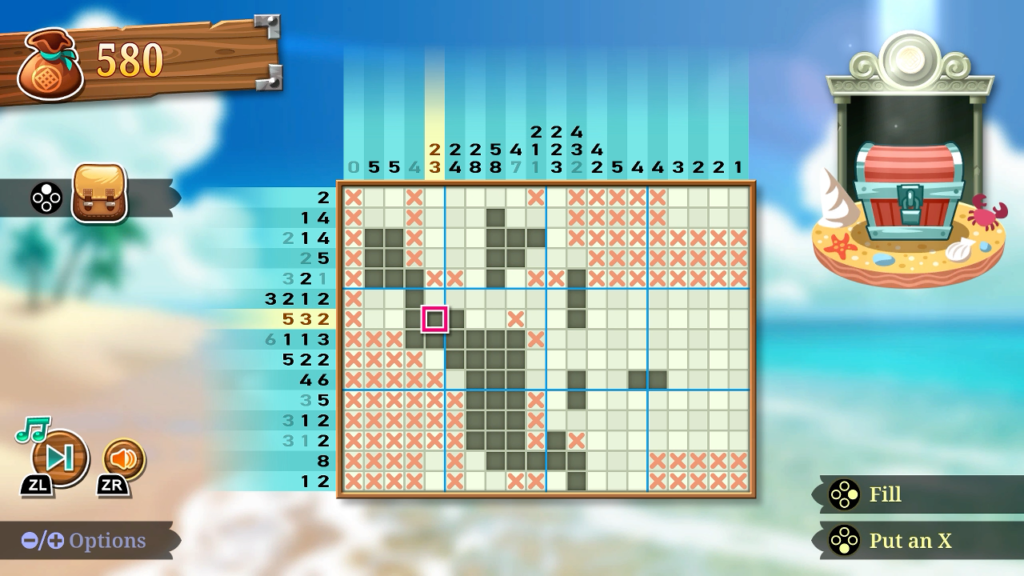
A “nonogram” pixel puzzle, sometimes called “Picross,” is a logic puzzle where I apply deductive reasoning to number clues on a grid to fill in the grid’s squares. The numbers placed on the grid’s X and Y axes show the number of pixels which need to be filled in that row. If a row is ten squares wide and its number clues are four and five, then I need to fill in four squares, then leave one blank, then fill in five more, for a total of ten squares total. Few puzzles are generous enough to give me a set of clues that will fill the entire row. If my number clue is a two, then I have no way of knowing which of the ten squares need to be filled in. I have to return to that row later when I have solved perpendicular clues which give me more information to deduce where those two pixels should be. If I correctly deduce solutions to all the number clues, then the puzzle is solved and a picture is revealed.
Nonograms are difficult to describe in writing and make much more sense in practice, so please don’t be discouraged if this explanation makes little sense. I must also say that PictoQuest is one of the unfriendliest videogames I’ve played for nonogram novices—but more on that in a little bit.
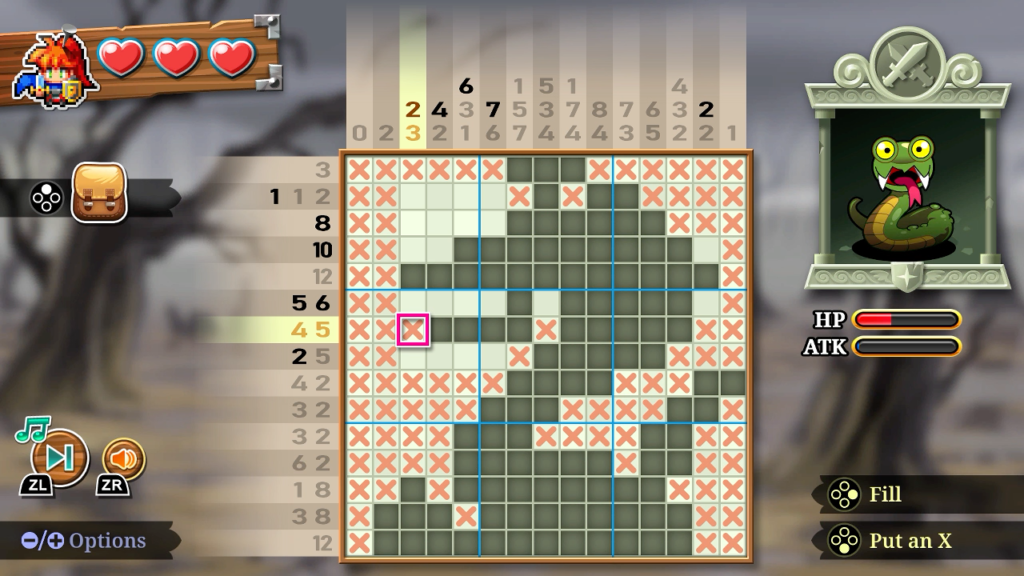
The twist that PictoQuest brings to nonogram puzzle solving is a sprinkling of RPG elements. Foremost is the introduction of hit points and enemies which attack my chosen player character. The monsters I face in a battle have meters which inch upwards while I solve the puzzle. If their meter fills all the way, or if I make a mistake in the puzzle, then the monster attacks and removes a chunk of the player character’s hit points. If all their hit points are drained then I lose the puzzle and have to start over from the beginning.
I am not defenseless against the monster’s attacks. My main tool is knocking a chunk off a monster’s meter by solving a row in the puzzle. I can also use items in battle. A healing potion restores hit points. A ball of ice will freeze the monster’s meters for a few seconds. A ball of fire will fill in solutions on the grid; since the puzzle effectively acts as the monster’s hit point meter, this functions as “attacking” them.
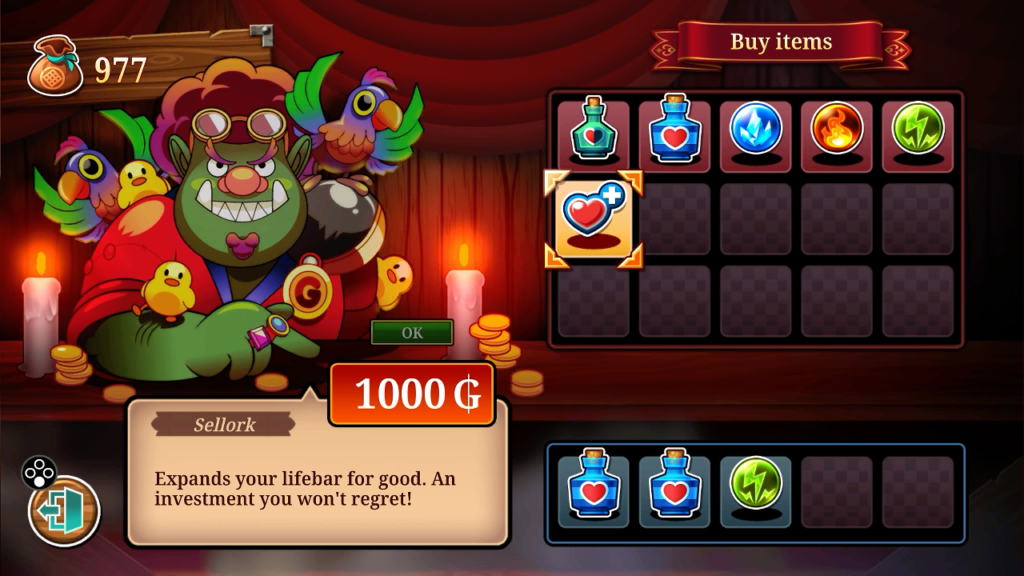
Items can be purchased with gold earned from solving puzzles. They are also won from chest puzzles, special puzzles where I lose gold instead of hit points for making mistakes. NPCs met on the road give out some of the best rewards, offering powerful items for completing puzzles without making a single mistake or while dealing with especially aggressive monsters
The effect these RPG elements bring to nonogram puzzle solving is to add what are essentially hot seat rules. In most other nonogram videogames I’ve played, I can take as long as I want to solve a puzzle and make as many mistakes as I want along the way. PictoQuest’s menacing monsters do not allow this. If I take too long to find solutions or make too many mistakes, monsters will drain my player character’s hit points. Items help to take some of the pressure off, but I predict beginners will find themselves quickly overwhelmed.
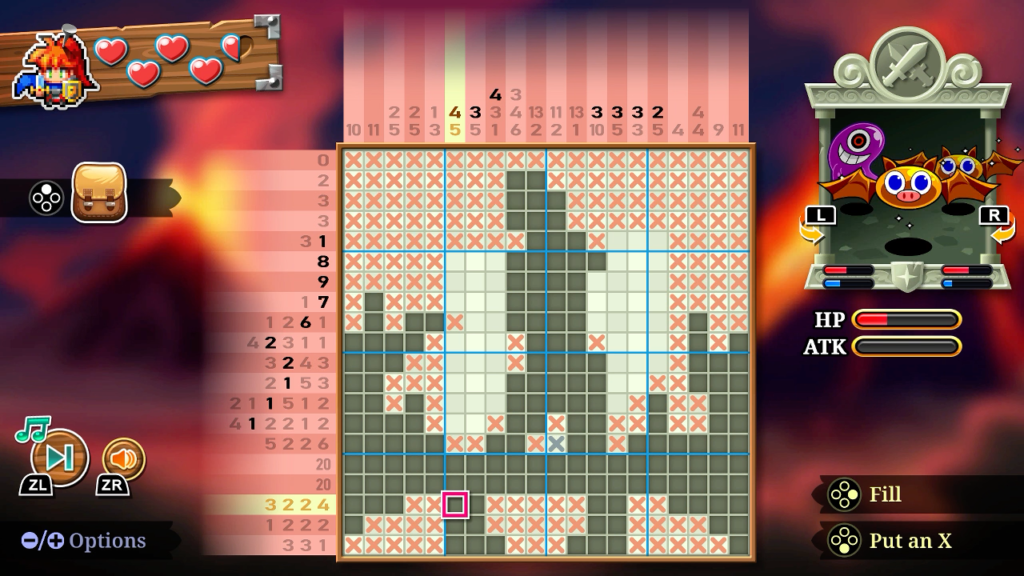
It doesn’t help that PictoQuest omits many of the friendly assists which have become standard in other nonogram collections. Solvable rows are not highlighted. There is no “maybe” mark, forcing me to count out every row by sight. My mistakes are autocorrected, but monsters also get free hits when I make them, so I can’t rely on the feature too much. Most unfriendly of all, the final puzzle sets take place on 20×20 grids, the largest I’ve seen in a commercial nonogram collection.
With lots of extra pressure put on the player and none of the standard assists to rely on, PictoQuest is a daunting introduction for nonogram newcomers. The narrative adventures Murder by Numbers and Pixel Puzzle Makeout League, as well as Jupiter Corporation’s long-running Picross e and S series, are much better places for beginners to acclimate themselves to nonogram puzzle solving.
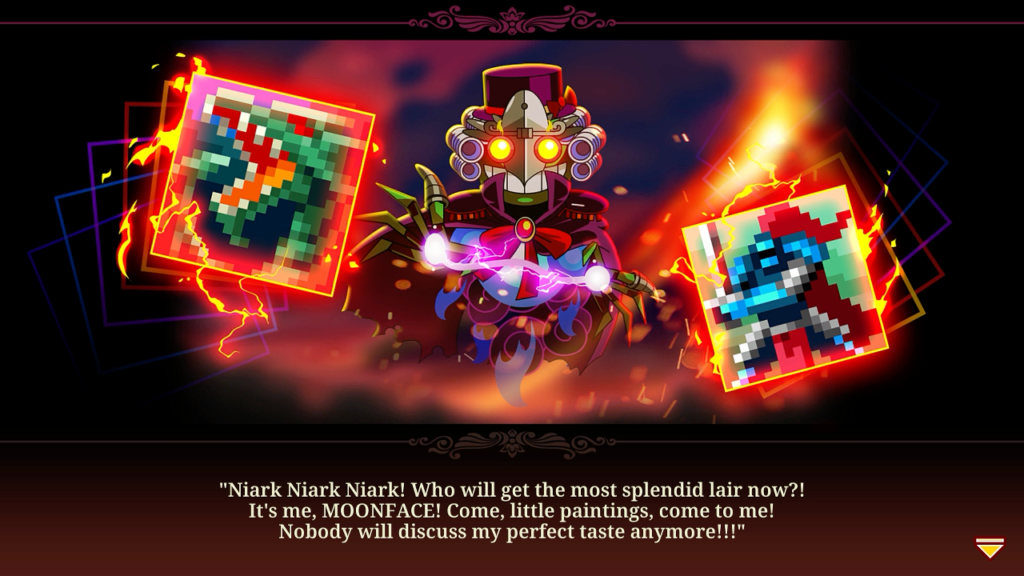
I want to be excited by the prospect of challenging hot seat rules placed over familiar nonogram puzzles with all the assists turned off, but I am frustrated by PictoQuest’s essential shallowness as a fantasy RPG. Aside from my hit points there are no actual statistics to develop. My effectiveness as a warrior against Moonface and his minions relies on my ability to solve the puzzles.
More frustrating is the lack of meaningful choices to make. At the videogame’s start I choose to play as Flöh or Arvel, but they travel together regardless and both participate in what little dialog they share with NPCs. I opt to play as Arvel because, as the daughter of one of Pictoria’s great artists, I feel she has more stakes in the conflict, but my choice is meaningless either way.
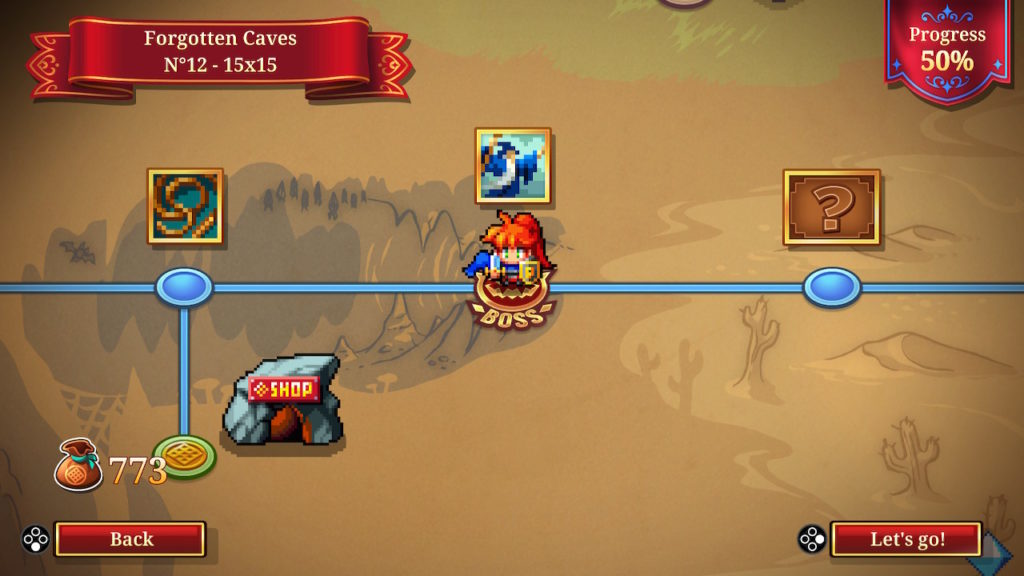
Traveling the world is similarly devoid of meaningful choice. I follow a predetermined path along a map, allegedly traveling through forests, into caves, and up mountains, but these details are so faint in the background they may as well not exist. The monsters I face and puzzles I solve seem to have little bearing on the environment Flöh and Arvel are standing in. Alternate paths never travel further than one puzzle off the main road. There is a fast travel system, but there’s no reason to return to earlier areas.
As a nonogram puzzle collection, PictoQuest is challenging and satisfying. As an RPG, it’s an empty and nominal experience.
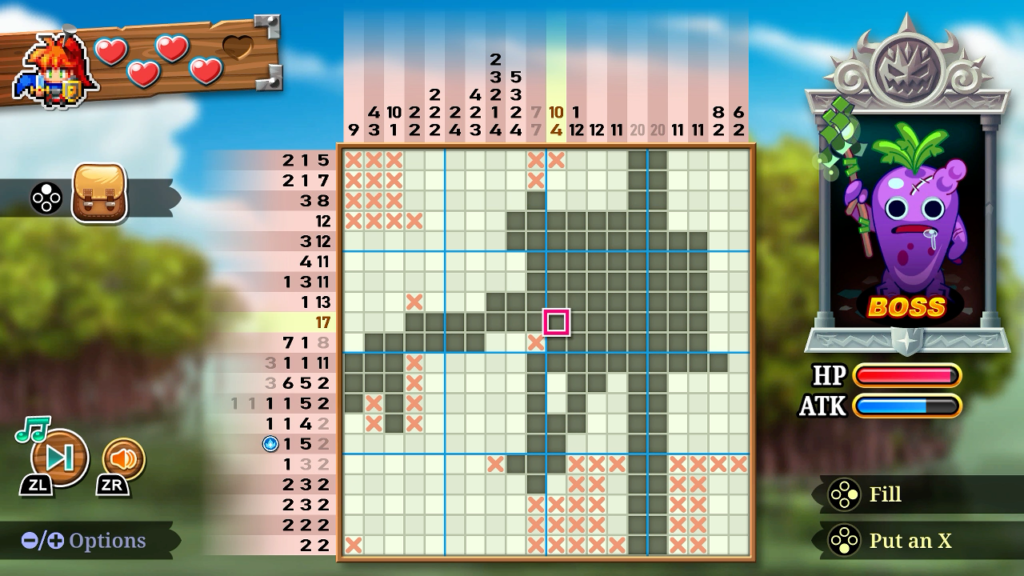
PictoQuest: The Cursed Grids is a strong collection of challenging nonogram puzzles which will keep experienced players content for fifteen to twenty hours, though I caution novices to stay away until they learn the tricks of the trade. Its other aspects are disappointing, as they feel like they could be much more. Its RPG elements are almost non-existent. Its world cannot be explored so much as traversed along the single available path. Its setting is surface level, its villain a complete non-entity, its ending a single screen declaring victory. I like PictoQuest, but only as another nonogram puzzle collection to plow through and nothing more.